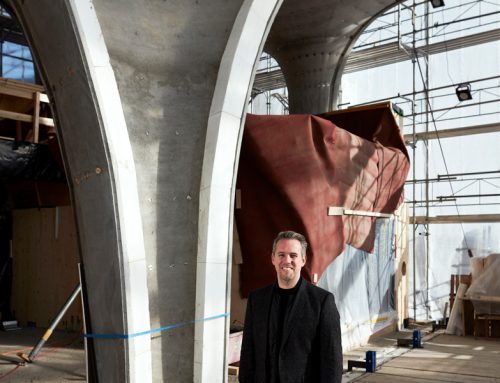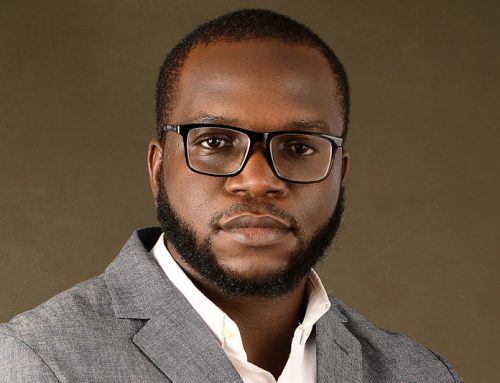African art is an internationally recognised discourse that has, in the main, been written by non-African scholars from Europe and North America. Prof Ruth Simbao is focusing on changing this through a new DST/NRF SARChI Chair in Geopolitics and the Arts of Africa, launched in January this year.
“The fact that much of what is curated, taught and written in terms of the arts of Africa is still framed by scholars outside of Africa, requires a significant shift in terms of the visibility and influence of scholarly publishing from the African continent,” explains Prof Simbao, professor of Art History and Visual Culture in the Fine Art Department, and SARChI Chair of a team of 19 postgraduates, all from Africa.
While significant work is being produced by artists and scholars on the continent it tends not to be recognised by the global art market and the dominant art discourse unless it is shaped and ‘consumed’ by scholars, curators and collectors based in the ‘north’. As part of addressing this, Prof Simbao, one of the consortium editors of African Arts, a prestigious quarterly produced by UCLA and published by MIT Press, is putting together an issue produced entirely by scholars based on the continent, due for publication in May 2017.
“While the journal does, in general, publish some high quality work on the arts of Africa, it is problematic that, overall, merely 4% of the authors are based in institutions on the African continent, and only 1% are in African countries excluding South Africa,” says Prof Simbao. “Through the establishment of the Arts and Culture: Writers in Africa (ACWA) network, I’m working on redressing this, and, as an editor of African Arts I aim to include a balance of authors from throughout Africa.”
Prof Simbao and the SARChI Arts of Africa Research Team (AART) are working towards shifting the production of knowledge about the arts of Africa away from the still-dominant Western art canon. “This presents an opportunity to focus on the work of African scholars and to change the way we learn, ‘unlearn’ and teach. The emphasis is on what I call ‘sideways learning’, where the African continent learns and engages with the Global South more than the Global North in terms of writing, publishing, teaching and curating. Further, ‘sideways learning’ stresses the necessity for staff and students to learn from each other as we unlearn certain assumptions traditionally taught in Western knowledge structures in the visual arts”.
The Chair has a strong emphasis on building collaborations with scholars and visual and performing artists in other African countries. In July it hosted an ACWA workshop at Rhodes, where a network of scholars and artists from Uganda, Zimbabwe and South Africa came together to develop or refine articles for publication.
One of the artists who attended the workshop is artist and Makerere University Masters graduate Eria Nsubuga from Kampala, Uganda, who engages with issues of power and politics through his work and who is now starting his practice-based PhD.
Another Ugandan artist and activist or artivist who attended the workshop is Aidah Nalubowa from Artivists 4 Life in Kampala. From Zimbabwe there was Fadzai Muchemwa, the co-curator of the National Gallery of Zimbabwe in Harare. Both are opening up new areas of decolonised learning, and are inviting new and more critical ways of thinking and writing about Africa through the visual and performing arts.
Prof Simbao is building relationships with a range of scholars, artists, gallerists and curators throughout Africa, including the Director of the Lagos Photo Festival, Azu Nwagbogu, with whom she co-curated an exhibition of eight up-and-coming African artists titled Consuming Us at the Cape Town Art Fair in February this year. One of the artists, Masimba Hwati, from Harare, Zimbabwe, was the winner of the Special Projects Section: Tomorrows/Today, with his installation: Don’t Worry Be Happy (2016). Hwati will participate in a research residency at Rhodes later this year and plans to pursue his MFA in the Fine Art Department.
Referring to his installation in the Consuming Us exhibition, Hwati says, “The concept of the wheelbarrow-table suggests the absurdity of definition and homogenization of the African continent… A wheelbarrow, usually an inert instrument, moves only by external force. This is the most common approach towards ‘Africa’ in most international policies and general interaction with the African continent”.
Prof Simbao has a particular interest in visual and performance art that questions who we are as humans, as Africans, and as global citizens in relation to place and geopolitics. “I’m interested in public engagement through performance, such as artists who use their own bodies to critique social and political codes embedded in, for example, urban spaces or public monuments.” She has worked with Durban-based artist Doung Anwar Jahangeer, who walks with audiences through public spaces, challenging the way space in South Africa is still very much segregated economically and racially.
One of the PhD students in the Chair, Rachel Baasch, is writing about Jahangeer’s work, using a comparison of urban and social space in Palestine and South Africa. In both countries, artists engage with ways in which spaces have been taken over to generate fear, separatism and oppression.
Fourth year student, Sikhumbuzo Makadula, recently performed ‘In Search of a Nation’ on the streets of Harare and in the Njelele Art Space, engaging with issues of migration, foreignness, atrophy and healing.
“This kind of art, like the research of this Chair” explains Simbao, “extends beyond elitist notions of fine art confined to museums and galleries, and includes interdisciplinary research on visual culture that engages with and challenges who we are and where we are as individuals and communities in our personal and political spaces.”




